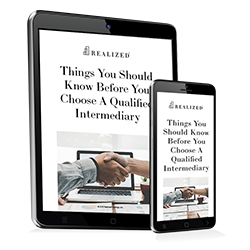
Anyone embarking on the 1031 exchange process understands that an independent entity, responsible for facilitating transfer of the proceeds, is necessary to ensure a successful property swap. Known as the Qualified Intermediary (QI) or sometimes, accommodator, this entity takes control of the funds, from the moment the relinquished property is sold, until the purchase of the replacement property.
Then there are the non-1031-exchange QIs. These QIs are defined as any individual or organization that holds securities other than their own accounts. Though the QI system, in this case, is more important to investors outside of the United States, understanding the differences between QIs and non-qualified intermediaries -- NQIs -- can be important.
Qualified versus not
In its most basic format, the main QI requirements are that the entity:
- Be a non-U.S. financial institution
- Enters into a QI agreement with the IRS
The IRS agreement focuses on required paperwork, as well as specific withholding requirements. This entity is required to report certain withholding activities to the IRS, as well as to maintain documentation and observe withholding requirements.
The QI can also certify treaty residence and/or non-U.S. residence on behalf of its direct, foreign clients. This means those foreign clients can obtain a reduced rate of U.S. withholding on their investments, without disclosing their identity, either to upstream custodians or even the IRS.
On the other hand, the non-QI is defined as any financial institution outside of the United States, which has not signed a QI agreement with the IRS. Basically, any intermediary that doesn’t apply to become a QI is, by default, an NQI.
From an activity and documentation standpoint, the NQI’s duties will be similar to those of the QI. The main disadvantage of the NQI, however, is that this institution could be deemed by the United States to be facilitators of tax evasions. In other words, non-U.S. financial firms providing access to the U.S. security markets, which do not adopt QI status, could be placed under suspicion of tax evasion, even if this might not necessarily be the case. Additionally, NQIs might not be able to protect the identities of their direct clients from the IRS.
Because of this, NQIs must leave a larger paper trail when it comes to forms, taxes, and withholding. Furthermore, because of these challenges, many reputable financial firms won’t do business with NQIs. Or, if they do, these firms will place severe restrictions on them.
Investor beware
If you are a U.S. investor, and the bulk of your assets are from U.S. markets, you probably won’t have to worry about the challenges arising from using an NQI. If, however, you have foreign relatives interested in having access to U.S. markets, it might be a good idea to let them know that there is a difference between QIs and NQIs. Foreign entities interested in U.S. investments will likely be better served by working with a qualified intermediary, versus a non-qualified intermediary, because of reputation, and a higher degree of privacy.



